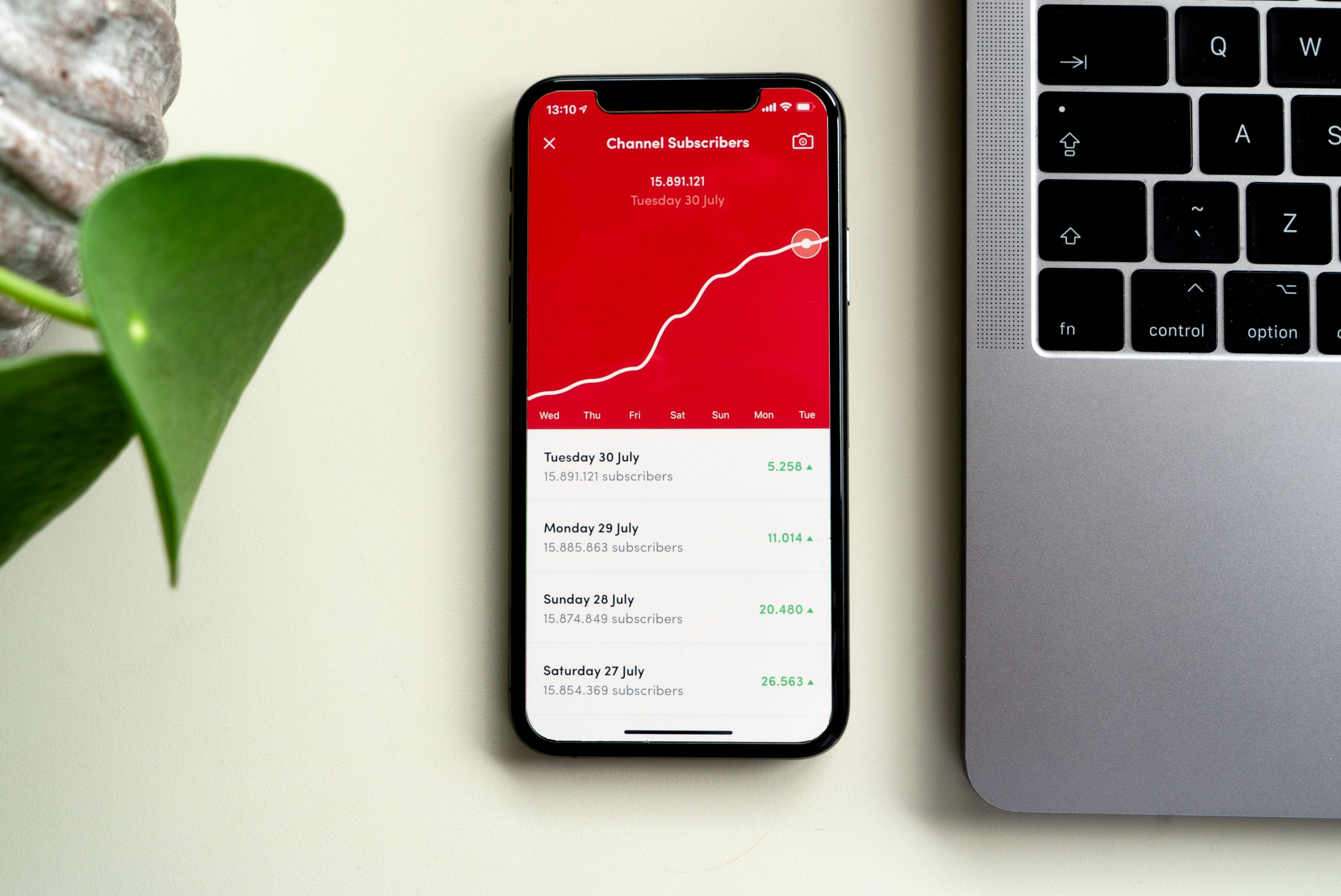
YouTube Analytics: Gather Data, Optimize and Increase Your Views
YouTube analytics is a powerful tool that channel owners can use to gain insights into their video and channel performance.
The data gathered from YouTube analytics can help you understand which videos are performing well, who is watching them, and how average viewers are engaging with them. This information can be used to optimize your YouTube channel for better results.
YouTube analytics provides a wealth of data, including video views and likes.
The information can be used to optimize your videos for greater success on the platform by understanding who is watching them as well as how viewers engage with each clip – such things as comments or shares may point out what aspects are most popular within any given country’s audience.
Diving Deeper Into YouTube Analytics and YouTube Metrics
YouTube has tons of data and statistics on its videos, which can be very useful for creators. This information can be accessed through YouTube Analytics, which is available to all YouTube creators. YouTube Analytics can be found by clicking on the “Creator Studio” button in the YouTube interface. Once in Creator Studio, click on the “Analytics” tab to view a brief summary of your channel performance.
You can also view reports at the video level using the YouTube Studio app . YouTube Studio app is available on iPhones and iPad, Just open the YouTube Studio app from the bottom menu, and tap Analytics. Do note that some reports may not be available on YouTube Studio app and can only be accessed using a computer.
YouTube Analytics provides a variety of metrics, including views, watch time, audience retention, and demographics. Each metric provides valuable insights into how your videos are performing.
However, the platform’s vast array of data points can be overwhelming for even the most experienced marketers.
Here’s a quick overview of some of the most important YouTube analytics metrics and what they mean for your channel:
- Views: This is the number of times your video has been watched. YouTube counts a view when a user watches at least 30 seconds of your video (or the duration if it’s shorter than 30 seconds).
- Watch time: This metric measures the total amount of time that users have spent watching your videos. YouTube considers watch time to be more important than views and counts a watch time when an average viewer watches at least 60% of your video. So aim to create videos that keep viewers engaged for longer periods of time.
- Average view duration: This metric tells you the average amount of time that viewers spend watching your videos. Don’t get this confused with watch time, which measures the total amount of time that users have spent watching your videos. Average view duration is calculated by dividing the total watch time report of your videos by the number of views.
- Audience retention: YouTube calculates this metric by analyzing how much of each video people watch on average. A high audience retention rate means that viewers are sticking around to watch your videos all the way through, while a low rate indicates that people are quickly losing interest.
If you notice that your audience retention rate is low, try to improve the overall quality of your videos and upload videos using the right video settings. Youtube recommends videos uploaded in MP4 to minimize video losses, if you upload your videos from your iPhone to YouTube, it would be best to convert them to the optimal format.
- Demographics: YouTube provides insights into the gender, age, and location of your viewers. This information can be used to tailor your videos to meet the needs of your target audience better.
- Engagement: This metric measures how often viewers interact with your video, for example by liking, commenting, or subscribing to your channel.
- Traffic sources: This metric measures where your viewers are coming from when they watch your videos.

It might seem hard at first but once you get comfortable using this tool it’ll become second nature; there are plenty of ways one could go about analyzing their own viewing habits through YouTube’s various metrics (we recommend looking into bespoke reports).
For example: sorting all those nifty YouTube channel statistics according to date, time, video, or channel.
Insights on Youtube’s Views, Audience, and Engagement
YouTube is the world’s largest video-sharing website, with over 2 billion monthly active users. Here are some insights on YouTube views, audience, and engagement based on YouTube’s own data and statistics:
The average YouTube viewer is between 18 and 34 years old, and 46.1% of YouTube viewers are female while 53.9% are male.
YouTube is the main source of videos for 78% of users.
The most popular type of video is product reviews, gaming, comedy, and how-to/tutorial.
Research shows that channels that uploaded longer videos (10 minutes or more) saw higher engagement levels, including more likes, comments, and shares.
YouTube’s data shows that the best time to upload a video is on Wednesday at noon ET, as this is when users are most active.
YouTube also found that channels that uploaded videos regularly (at least once a week) and consistently (over a period of months or years) saw the biggest increases in subscribers and views, and engagement metrics.
The majority of YouTube traffic comes from mobile devices, with 70% of YouTube views coming from smartphones and tablets.
In a recent study by Omnicore, it was found that videos with titles that are under eight words long get the most views. YouTube videos with titles that are over fourteen words long get the least views. The average YouTube video title is eleven words long.
The majority of YouTube traffic comes from outside of the United States, with 50% of views coming from outside of the US. The top five countries for traffic are India, the United States, Brazil, Russia, and Japan.

Improve Your Channel
As a YouTube creator, it’s important to understand how to use YouTube data to improve your channel. Now that you have seen all this data, it is time for you to use it to make creative videos. Here’s how you can use data from YouTube analytics:
YouTube analytics can help you identify areas where your entire channel could be improved. For example, if you notice that viewers are not watching your videos all the way through, you could try creating shorter videos or more engaging video content.
Track your most popular videos
This data can help you understand what kinds of YouTube content are resonating with your audience through your top videos and allow you to produce more of the same.
Post at optimal times
Use YouTube analytics to see what time of day your videos are most popular and plan to upload new videos at that time.
Understand your audience
YouTube analytics provides detailed information about who is watching your videos and how they are finding your channel. This information can inform the content you create and the promotion strategies you use.
Track your progress
YouTube analytics includes a variety of statistics that can be used to track the progress of your channel. By monitoring these statistics, you can gauge the effectiveness of your video content and marketing efforts.
Compare your data to others
YouTube analytics includes comparison features that let you see how your channel stacks up against other YouTube channels in your niche. This can be a helpful way to identify areas where you need to improve.
Tips for Using YouTube Analytics
Check your data regularly
YouTube analytics updates in real-time, so it’s important to check back often to see how your videos are performing. Checking your data regularly will help you spot trends and make changes to your video strategy as needed.
Know your goals
What do you want to learn from your data? YouTube analytics can help you track things like view count, watch time, and subscriber growth. Knowing what you want to measure will help you get more out of the data.
Analyze data further
Export your data from YouTube Analytics to a spreadsheet so you can analyze it further.
Experiment with filters
YouTube analytics offers a number of different filters that you can use to drill down into your data. Try experimenting with different filters to see what kinds of insights you can glean from the data.
Keep an eye on the demographics section of YouTube analytics
This data can help you better understand who your audience is and tailor your content accordingly.
Keep an eye on your watch time statistics
This metric can give you insights into your content’s engagement and whether viewers are sticking around until the end.
Use YouTube analytics to track your subscriber growth over time
This data can help you gauge the success of your marketing efforts and identify any potential areas for improvement.
Take advantage of YouTube’s Insights tool
YouTube’s Insights tool provides detailed information about how people are discovering and interacting with your videos. This data can be used to inform your content strategy and help you grow your channel.
Wrapping up
YouTube analytics can be a powerful tool for growing your YouTube channel. By understanding the data and statistics available through YouTube analytics, you can make informed decisions about the content you create and the strategies you use to promote your channel.
You can also use your YouTube channel analytics to understand how people find your videos and what they’re doing once they get there. This data can help you refine your content strategy and improve your overall YouTube presence.
If you’re not already using YouTube analytics, start today. It’s a powerful tool that can help you understand your audience and grow your channel.





